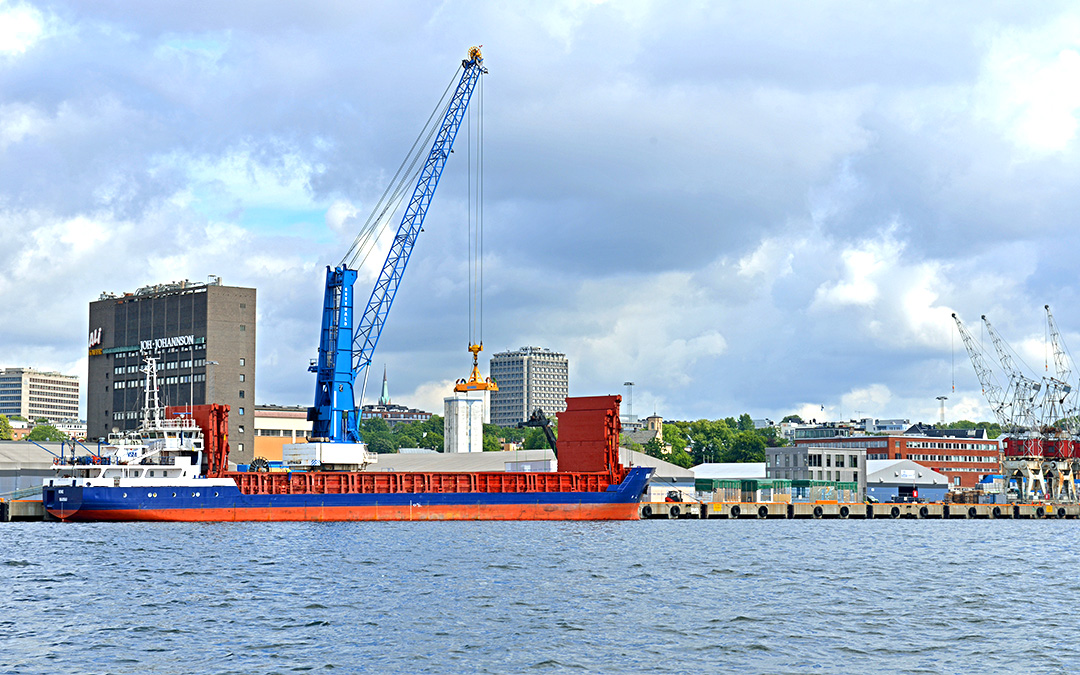Norway wants to position itself as a pioneer for future transportation solutions. For instance, the country is not only a leader in electromobility on the roads, but also in the development of electric and environmentally friendly ships. This makes Norway an important test market for transport players and car manufacturers. The country has started testing autonomous and driverless vehicles at an early stage. Already in 2019, Ruter, the company organizing the passenger transport in the larger Oslo-area, started a project with self-driving vehicles on line 35. There have also been projects where passengers could order a self-driving electric minibus as a shared cab via a mobile app.
Norwegian freight transport still largely follows the traditional routes. About 42 percent of freight is transported by sea, 52 percent by road and six percent by rail. Air transport accounts for less than 0.05 percent. Freight transported by road amounted to just over 20.2-billion-ton kilometers in 2020 (and more than 26 billion in 2022). Transport by sea accounted for 15.9, and rail for 2.2-billion-ton kilometers.
Strong national economy
Norway is one of the best performing Nordic economies, driven by government investment. Exports account for about 40 percent of gross domestic product. Norway’s main exports to the EU are oil and natural gas, while the main imports from the EU to Norway are manufactured goods. The volume of imported goods was 38.7 million tons, compared to an export volume of 59.6 million tons. Transport to and from abroad is dominated by shipping, with 83 percent of freight volume transported by ship, 14 percent by road and 3 percent by rail.
 The main role in import and export is played by shipping. Photo: Adobe Stock/valeriyap.
The main role in import and export is played by shipping. Photo: Adobe Stock/valeriyap.
At three percent, the more than 22,000 companies in the Norwegian transport industry account for a relatively small share of gross domestic product. more than 10.000 companies are active in the Norwegian road freight transport. It generates annual sales of around 6.4 billion euros, while postal, courier and express servicesgenerate 1.8 billion. Pipeline transport generates 3.7 billion. Passenger transportation has a turnover of 3 billion euros.
Difficult conditions for infrastructure
The long distances and geological conditions in Norway make it difficult to build and maintain transport infrastructure. Nevertheless, traffic routes are now above average and in good condition. However, some mountain passes have to be closed in winter. Others are only passable when cars drive in a convoy behind a snowplow.
In terms of the length of the rail network, Norway ranks 18th in the world with 0.78 meters per inhabitant. The network measures a total of 4,200 kilometers. The road network has a length of 95,000 kilometers. 72,000 of these are asphalted and more than 660 are freeways. This means that there are 17.55 meters of road for each of the 5.41 million inhabitants, which is also due to the low population density and the resulting long distances.
The road network is divided into four categories:
-
national roads
-
country roads
-
municipal roads
-
private roads
The two most important national roads are the E6, which runs north-south throughout the country, and the E39 along the west coast. The latter is currently being upgraded to reduce travel time from 21 hours. The new route is scheduled for completion in 2026. It passes over new bridges and tunnels, including Rogfast, a 27-kilometer-long undersea tunnel between the cities of Stavanger and Haugesund. In general, many ferry routes are increasingly being replaced by tunnels and bridges, usually financed by tolls. Only in the coastal regions dominated by fjords do car ferries continue to be of great importance.
Many of the larger cities have introduced automated toll systems. In 2021, there were 339 toll stations distributed among 61 toll projects. Criticism of the increase in toll routes led to the anti-toll party entering several local and provincial parliaments.
Across the country by express bus
The companies that operate long-distance bus services in the country largely cooperate in NOR-WAY Bussekspress. In northern Norway, however, the long-distance buses are operated by the provinces. Express buses are integrated into the regional bus network. They connect all major cities, airports and ferry terminals and even serve more rural areas.
Wouldn’t you like to share your experience on Norway’s roads in a comment below?


0 Comments